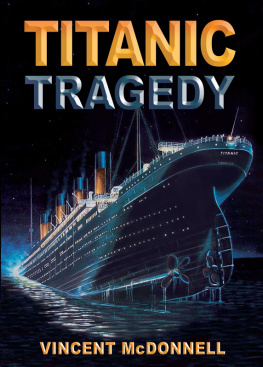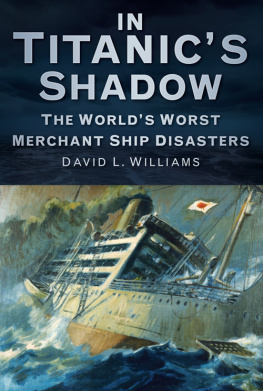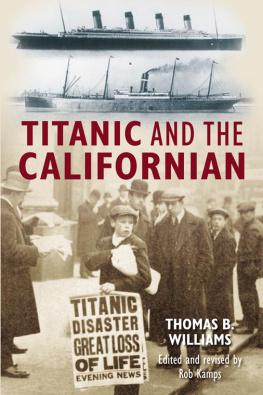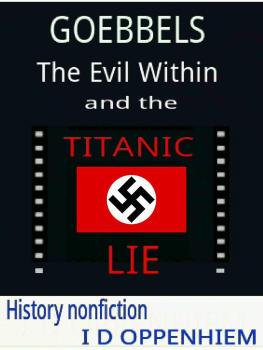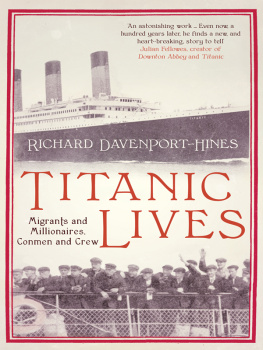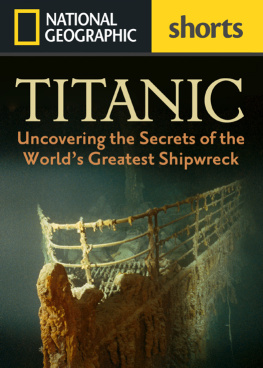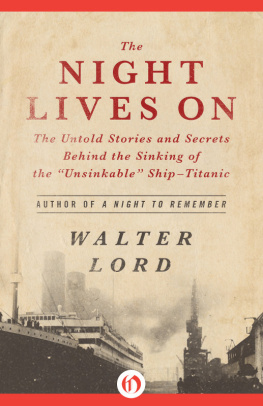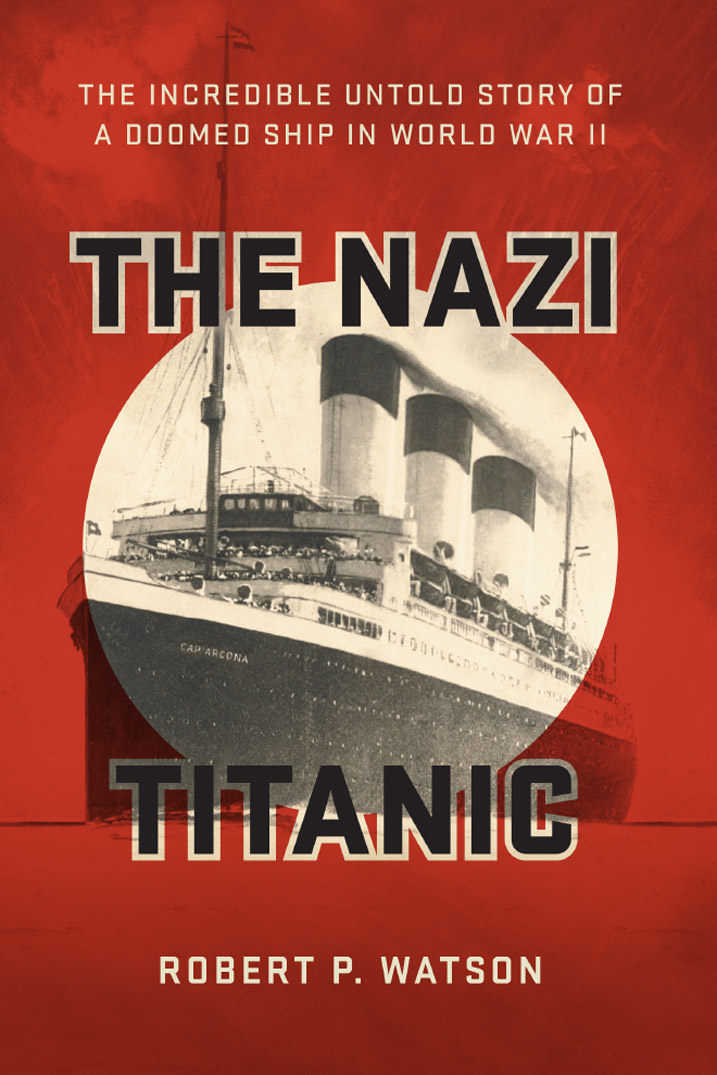

Copyright 2016 by Robert P. Watson
All rights reserved. No part of this publication may be reproduced, stored in a retrieval system, or transmitted, in any form or by any means, electronic, mechanical, photocopying, recording, or otherwise, without the prior written permission of the publisher. Printed in the United States of America. For information, address Da Capo Press, 44 Farnsworth Street, 3rd Floor, Boston, MA 02210.
Designed by Janelle Fine
Set in 11 point Palatino LT Std by The Perseus Books Group
Cataloging-in-Publication data for this book is available from the Library of Congress.
First Da Capo Press edition 2016
ISBN: 978-0-306-82490-6 (e-book)
Published by Da Capo Press
A Member of the Perseus Books Group
www.dacapopress.com
Da Capo Press books are available at special discounts for bulk purchases in the U.S. by corporations, institutions, and other organizations. For more information, please contact the Special Markets Department at the Perseus Books Group, 2300 Chestnut Street, Suite 200, Philadelphia, PA 19103, or call (800) 810-4145, ext. 5000, or e-mail .
10 9 8 7 6 5 4 3 2 1
Dedicated to all of those
aboard the Cap Arcona that fateful day
Table of Contents
Guide
CONTENTS
THIS WAS, IN MANY WAYS, the most difficult book I have ever written. At the same time, it was also the most rewarding. I dont believe I have ever read a story that I have found, simultaneously, as irresistible and intriguing yet as deeply disturbing and emotional as this one. While the process of researching history can be tedious at times, the excitement of uncovering stories of interesting people and important events more than makes up for the hours spent in the endeavor. This is true even if there is not a happy ending, which is, sadly, too often the case.
This book would not have been possible without the support and assistance of others. Judith Alsdorf and Jared Wellman, librarians at Lynn University, assisted me in tracking down some hard-to-find articles, books, and documents. Carsten Jordan, head of corporate communications for Hamburg-Sd in Germany, provided me access to old documents from the time the company operated the Cap Arcona. Kerst Lehmann, Selina Keipert, and Stefan Wolf translated several documents written in German. George Goldstein, MD, was helpful in watching and listening to numerous oral history interviews with survivors of the Cap Arcona. Nancy Katz offered many constructive ideas on the original draft of the book. Also, my friends Steve and Judy West, Joan and Morrie Berger, Judy Hyman, Dan Isaacson, Arnie Mallot, Ed and Harriet Sol, Bob Terpstra, and Mike and Audrey Dann were wonderful sounding boards as I put together ideas for the book.
The world is fortunate to have several remarkable repositories of information and documentation on the Holocaust and World War II. In no particular order, I acknowledge a few of the many individuals and organizations who helped with my research requests. Thanks to Simon Offord, Geoff Spender, Suzanne Bardgett, and Ian Carter of the Imperial War Museum in London; Megan Lewis, Jane Miller, Judith Cohen, and Peter Black of the United States Holocaust Memorial Museum; Lindsay Zarwell at the Steven Spielberg Film and Video Archive; Silva Sevlian and Danielle Gomez of the University of Southern California Shoah Foundation; Stephen D. Smith, executive director of the USC Shoah Foundation and UNESCO chair on genocide education; Yedida Kanfer at the Jewish Family and Childrens Services Holocaust Center and Tauber Holocaust Library in San Francisco; Irena Steinfeld at Yad Vashem in Israel; and Stephen Tyas and Roger Nixon for sending me materials that saved me from a flight to London.
I owe a very special acknowledgment to a few other individuals who made many contributions to the book. I would like to recognize my literary agent, Laney Katz Becker with Lippincott Massie McQuilkin, and thank her for demonstrating complete confidence in my manuscript and providing me with invaluable advice and guidance throughout the process. I was also very fortunate to have Robert Pigeon of Da Capo Press as my editor. The opportunity to work with such an accomplished editor and knowledgeable and passionate historian was both a delight and an honor. Thanks also to Amber Morris, Annette Wenda, Justin Lovell, Sean Maher, Lissa Warren, Kevin Hanover, and the entire team at Da Capo Press and the Perseus Books Group for all the help in editing and marketing the book. A special thanks to my friend Deborah Oppenheimer and the entire Oppenheimer family. Debbies remarkable documentary about the Kindertransport titled Into the Arms of Strangers won the Academy Award in 2001, and both Debbie and her film greatly inspired me. She also offered countless ideas on how to tell this story and generously passed along to me some important research contacts, all of whom proved most valuable.
To my wife Claudia for her support and invaluable assistance with this project. To my children Alessandro and Isabella for always being my inspiration.
The task of writing about this ill-fated ship and horrific event also reminded me of the importance of routinely dusting off the lessons of history and war and sharing them with each generation, lest they be forgotten and the mistakes and tragedies of the past be repeated. Oh, that we may finally learn from them! It is my hope that this book helps to shine light on this shocking series of events and serves as a testament to the survivors and victims of that terrible day. I dedicate the book to their memory.
ROBERT P. WATSON
Boca Raton, Florida
THE STORY OF THE Cap Arcona found me, not the other way around. The original plan was to write a book on the final week of World War II in Europe, from Adolf Hitlers suicide in his bunker on April 30, 1945, to Victory in Europe (VE) Day roughly one week later. By all accounts, these final days of the war and the Holocaust were marked by a complicated mix of heroism and relief as well as by tragedy and absolute chaos. This seemed to be a worthy topic for a book.
Nevertheless, upon discovering that the British government had sealed some of the war records from that final week of fighting, my interest was piqued. Subsequently, I stumbled upon the shocking details that constitute the end of the story you are about to read. It was a story I had never heard and one I could not resist. Needless to say, I never wrote the other book.
This is often how the process of historical discovery works. The stories of history often remain hidden for many years, as the process of historical discovery sometimes works in strange and frustratingly slow ways. Indeed, there is more we do not know than we do know about the past. Most of what happened in the past was never recorded, and the vast majority of documents, letters, and books that were produced at a particular time are lost to us today, whether by fire, decomposition, neglect, or intentional destruction. Apropos to the story in this book, it must be remembered that, while many survivors of the Holocaust sat down in subsequent years to record their stories, at least six million voices will never be heard. The same can be said for the sixty to seventy-five million people lost in World War II.
Yet World War II and the Holocaust were, respectively, historys bloodiest war and most costly example of genocide. As a result, many scholars have devoted their careers to telling these stories, as have the concentration camp survivors and other survivors and combat veterans who shared their painful memories with the next generation through published memoirs, candid talks with loved ones over the dinner table, and taped oral history interviews. The countless injustices of those two momentous events are among the most comprehensively studied and documented of any crisis or war in human history. It is thus tempting to think that we know everything there is to know about them. But this is not the case. Even events as thoroughly documented as these still have their secrets.


